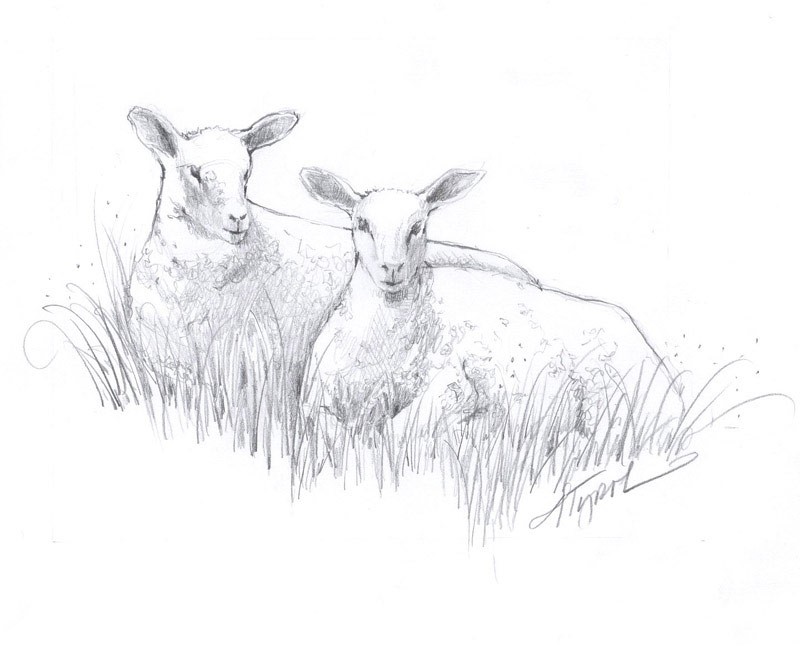
We lost money on sheep this year at our farm. In the grand scheme of things, we’re in good company: farmers in New Hampshire and Vermont have been losing money on sheep for going on 180 consecutive years, not counting the bonanza in the early 1860s when the U.S. Army bought a lot of wool at a decent price.
Why the loss? Because expenses exceeded revenues. Don’t laugh. That’s really all there is to it.
But here’s the unexpected part: if you observed our farm all summer, and watched us writing weekly checks to the grain company to keep our chickens and pigs in good health and then noticed the sheep grazing alongside eating nothing but free grass, you’d assume it was the sheep who were subsidizing the pigs and chickens, not the other way around. But the pigs and chickens bring home the bacon, as it were. The sheep don’t.
It’s not because we’re a small and, compared with the industrial giants, inefficient operation, because that’s true for all aspects of our farm, including the profitable pieces. Nor is it because people don’t like lamb. Just the opposite – because lamb is more of a niche product around here, it’s harder to find and hence commands a premium price.
The reason is the economic concept of externalities: our pigs and chickens are subsidized by the economy, while our sheep are not. Externalities are costs associated with an activity that are not paid, at least not directly, by the person or company doing the activity.
Take your car, for example. It used to be that you could drive around and emit all sorts of pollutants out your tail pipe, like lead and carbon monoxide and heavy metals. These pollutants made people sick and degraded the environment. They created real costs, but not costs that you paid while doing the driving. They were external to the money you paid to buy the car and the gas to run it.
For the three pollutants listed above, we the people, acting through our government, decided that society shouldn’t have to bear those external costs anymore, so we enacted legislation that removed lead from gas and required pollution-control equipment, like a catalytic converter, in every car. This increased the price of both gasoline and cars. The result is that these costs have now been internalized into the driving experience; you pay a little piece of them every time you drive. And our air and environment are much cleaner for it.
But there’s one great externality that we as a society have yet to address, and that is the emission of carbon from using fossil fuels. This additional carbon is changing the climate and the biochemistry of life on earth. Some people are already paying some of the price in some places, be it Andean farmers drilling irrigation wells to replace diminishing snowmelt or Florida homeowners paying more for flood insurance. But mostly we’re allowing it to remain an externality.
Economists give a wide range for the true cost of fixing the carbon externality, but it might require doubling or tripling the price we’re paying for energy right now. In other words, internalizing carbon might mean electricity at 30 or more cents per kilowatt-hour and gasoline at more like eight or ten bucks a gallon.
If the price of fuel tripled, the price of grain would triple, too, since fuel for planting, weeding, harvesting, and transportation is the lion’s share of what it costs to grow grain. The cost of our pork and chicken would also rise, therefore, though not quite so drastically, because our animals also eat lots of grass and vegetables and other stuff. But the cost of our lamb would remain mostly unchanged, since a dozen gallons of fuel is sufficient to cut and bale the hay that feeds our flock all winter. The production costs of lamb on pasture in Vermont and New Hampshire are already almost entirely internalized.
We’d win on the revenue side, too, since the floor price of meat – the roughly $1.99/lb price of industrial ground beef at the supermarket – would also shoot up, making the gap between it and our lamb seem less daunting. Instead of costing four times more than cheap beef, our lamb might only cost 25 percent more. People would undoubtedly be eating less meat overall, but a greater share of it would be grass-fed lamb.
Back in the barn, this talk of externalities doesn’t bother the sheep. Gorgeous green hay appears in their manger twice each day as if by magic, and their job is simply to internalize it. Keeping sheep is a tiny part of our farm’s overall operation, so we’re willing to lose a small amount of money until we figure out how to make revenues exceed expenses.


Discussion *